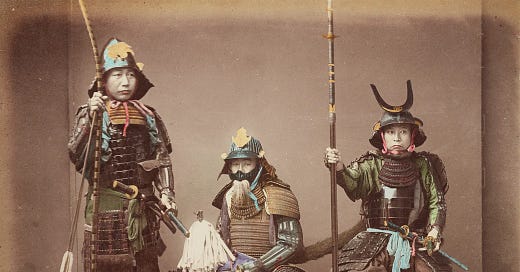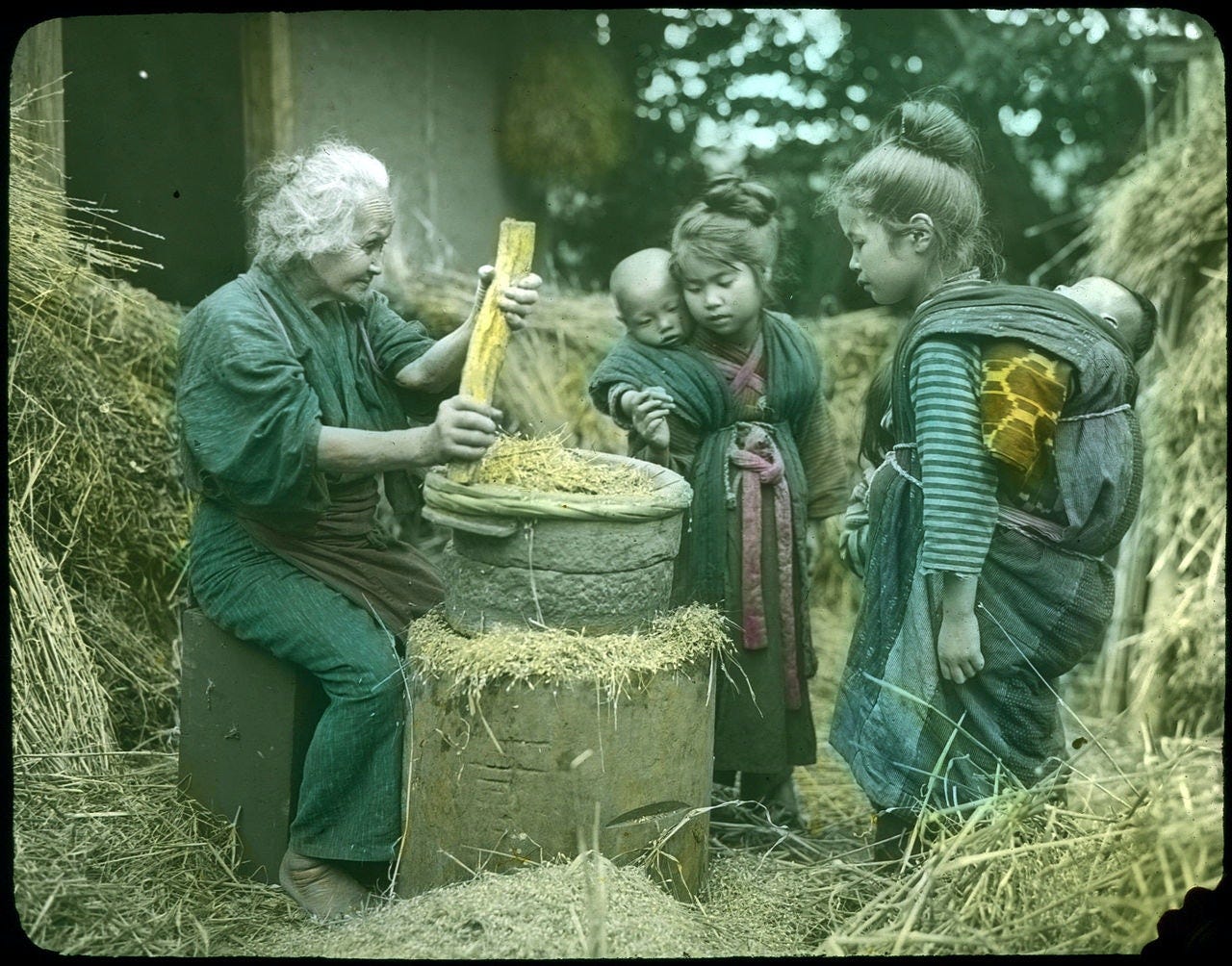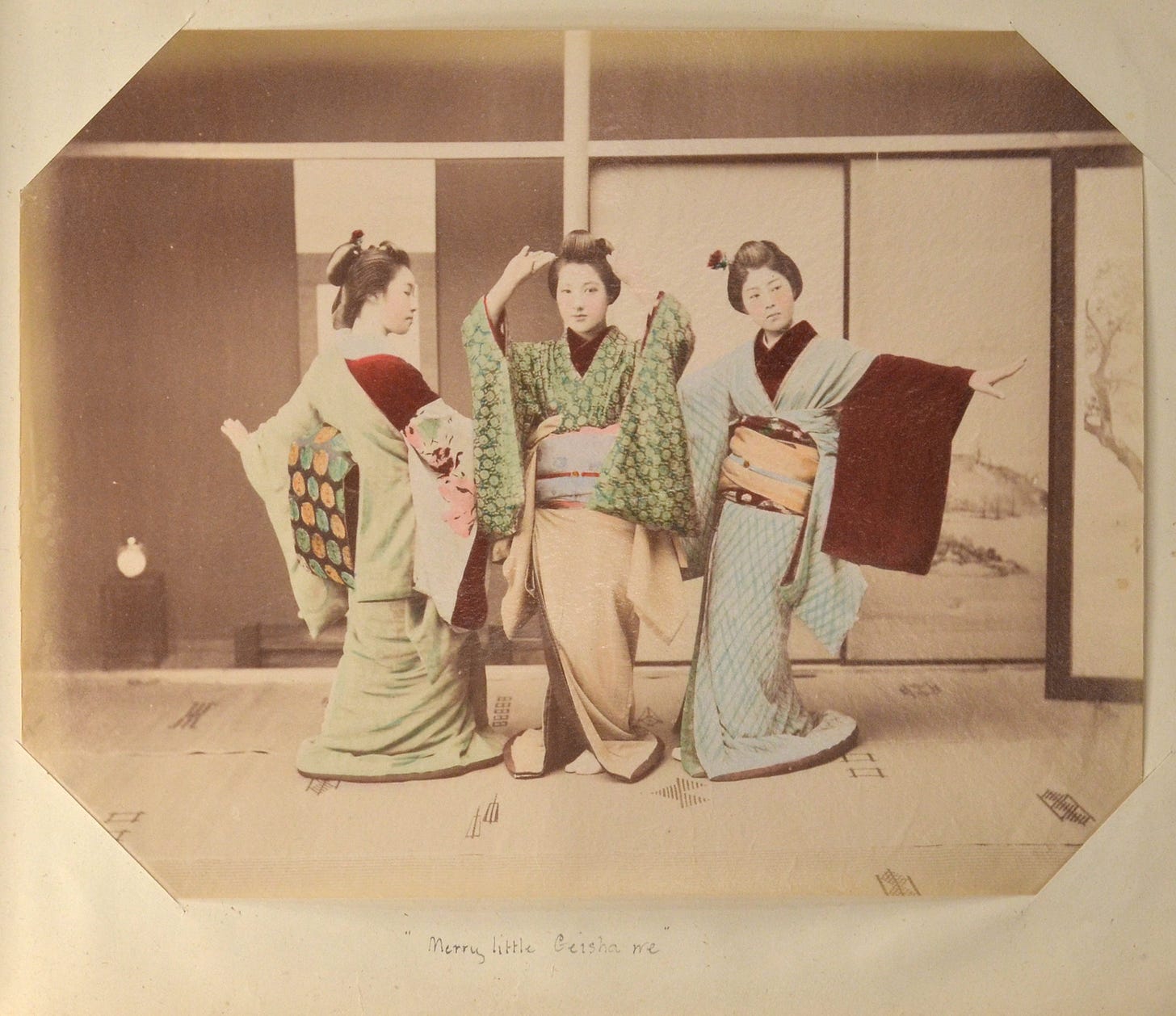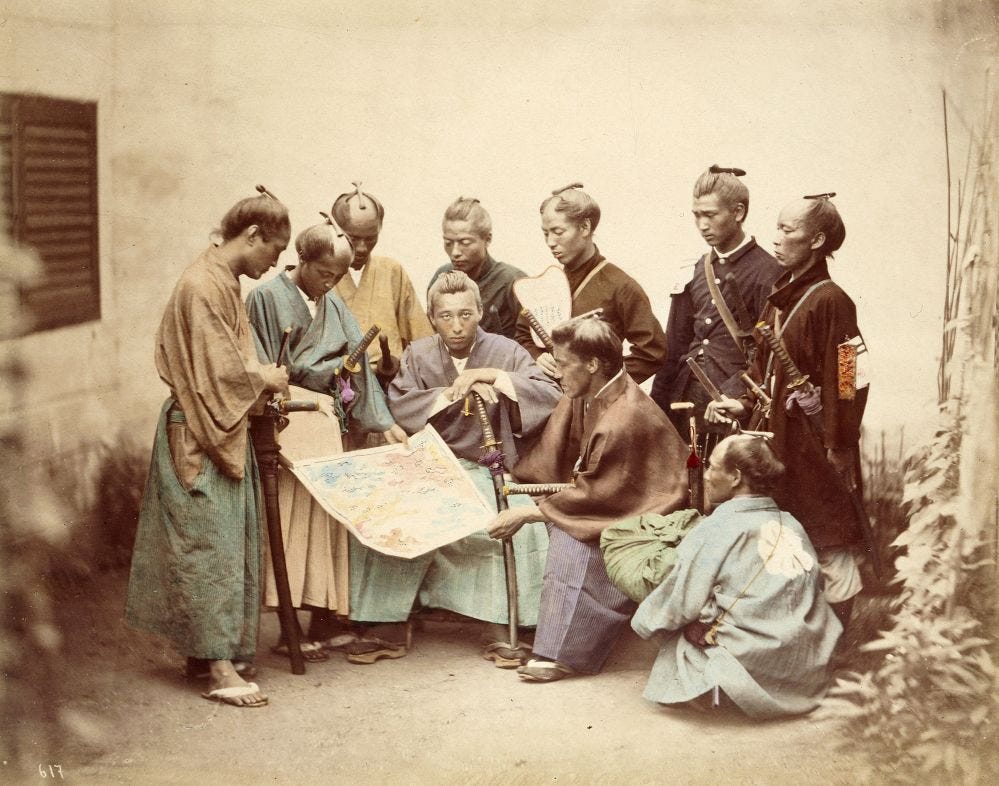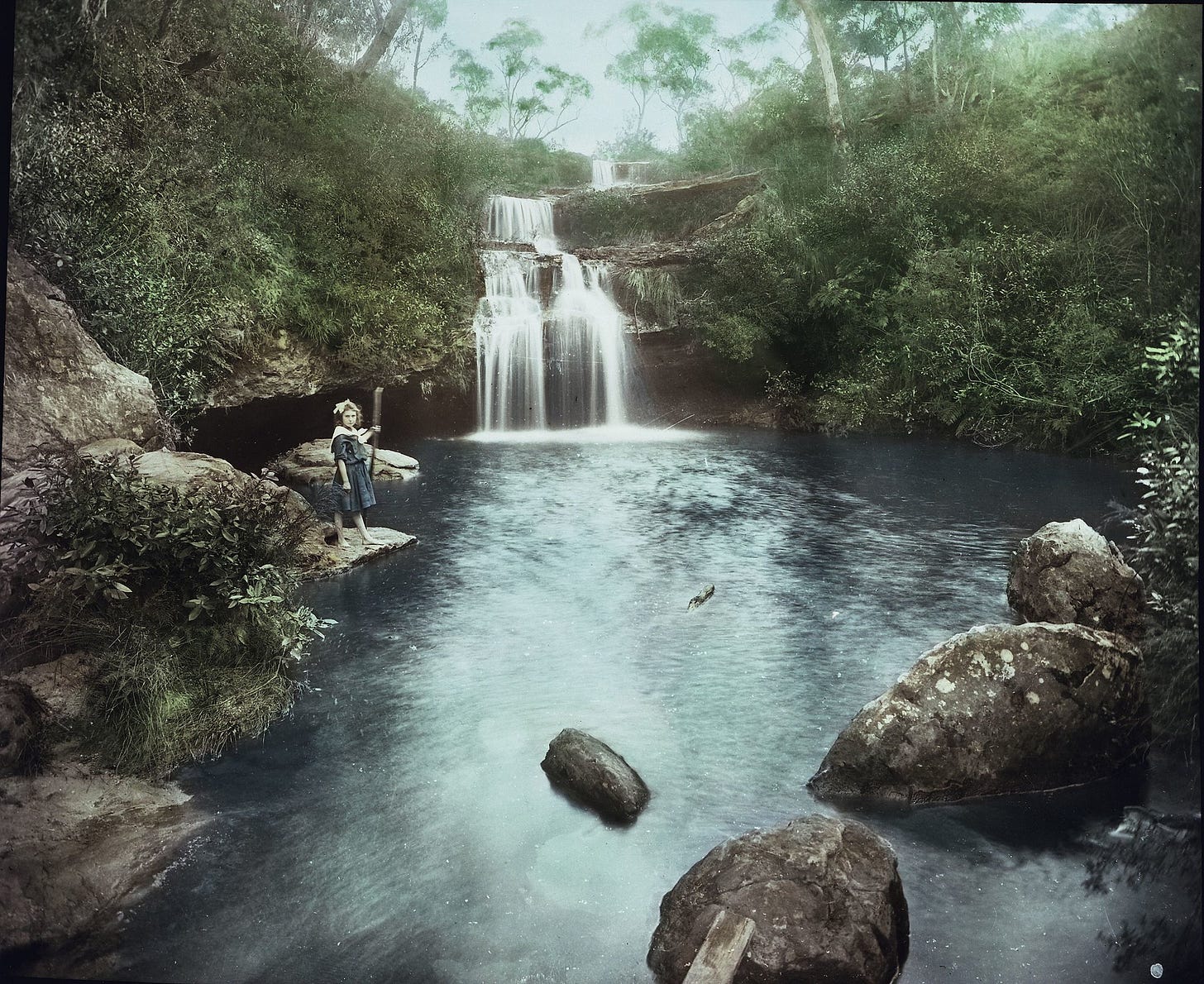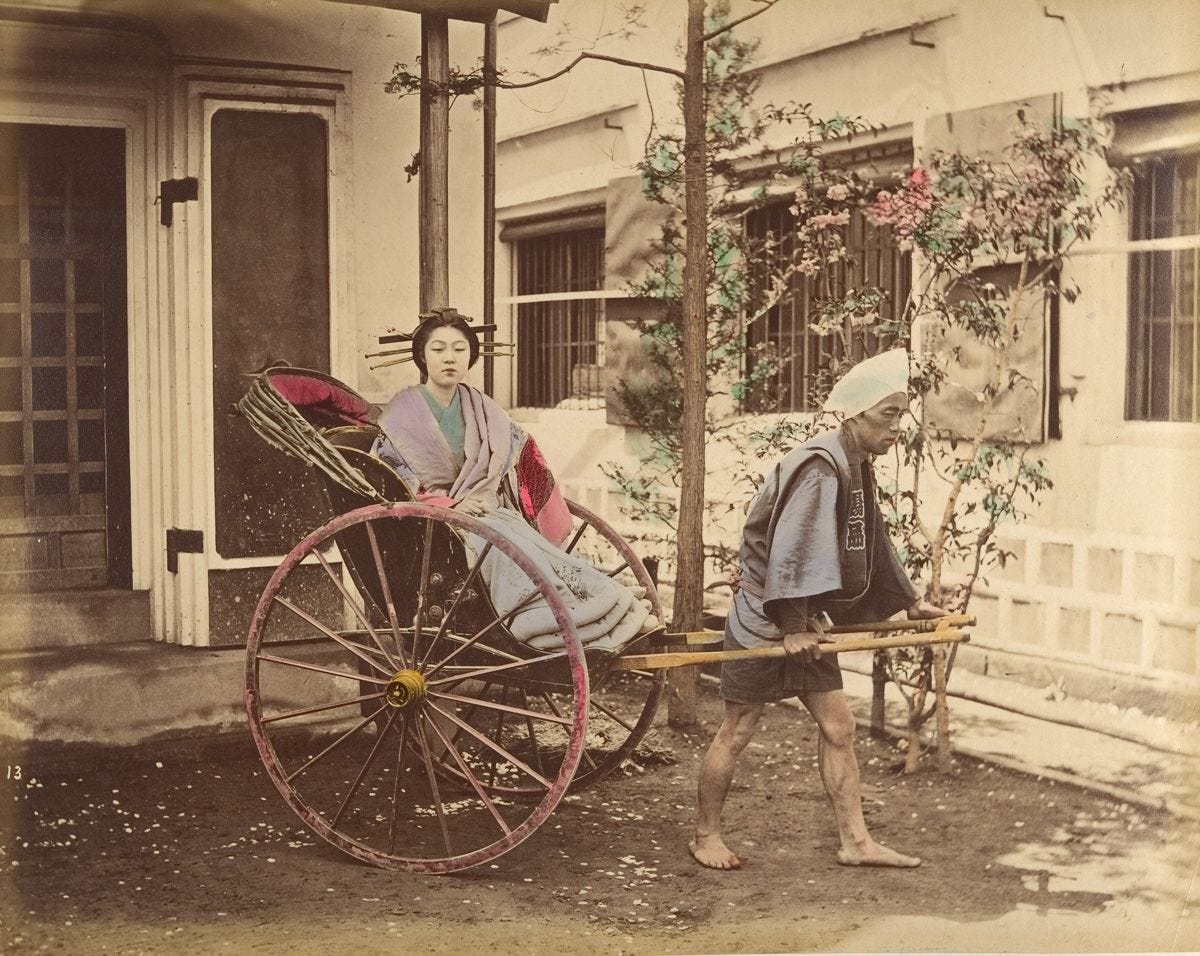Colorization before the digital age
The practice of hand-coloring photographs can be traced all the way back to the days of daguerreotypes
Last week I came across a fantastic collection of photographs collected by Herbert Geddes (a manager for a Canadian company) in Yokohama, Japan, during the years 1908–1918. What caught my attention was not only the fact that the pictures were fascinating by themselves, but also the fact that they were originally hand-colored.
I remember the first time I stumbled upon a photograph “colorized” by traditional mediums. I had been doing the same, but digitally, for a few years, and felt a weird and unexpected sense of duty to carry on a tradition that can be traced all the way back to the days of daguerreotypes - the first photography system available to the public (1839).
Yes, different from what most people may think, colorization is not a modern practice. Apparently, human beings have always been able to relate differently with what they are seeing if color is involved.
Traditionally, the photographs were usually colored/hand-painted by the photographer who took them; or, just like today, by an artist. Johann Baptist Isenring, a Swiss painter and printmaker, is credited with creating the first hand-painted daguerreotype; a result that he achieved by combining pigments and gum arabic to create a heat-fixed coloring agent.
Portrait painters, whose careers were threatened by the advent of photography, instantly adapted to stay in business. While some of them went on to become photographers, others started to hand-color images for well-known photographers.
Although the practice was introduced to Europe first, it was in Japan that it became more refined and widespread, thanks to the exceptional work of photographers and artists like Felice Beato and Yokoyama Matsusaburō. They popularized it, giving birth to a movement that would influence people all over the world. By the 1880s, it had become a distinctive element of Japanese tourist photography. According to various sources, photography studios were employing anywhere from 20 to 100 colorists by the 1890s.
High-quality hand-colored pictures were produced in Japan far into the twentieth century.
Between 1900 and 1940, the Western Hemisphere experienced the so-called "golden era" of hand-colored photography. At that time, hand-colored photographs had become popular wedding gifts and vacation souvenirs.
Black and white photography had evolved, and so had the techniques and mediums used to produce the colored photographs: from crayons and oil paints to pastels and watercolors.
The first marketable process of color photography only came with the Lumiére brothers’ autochrome, in 1907.
The possibilities of the process seem to be unlimited... soon the world will be color-mad, and Lumière will be responsible.
- Alfred Stieglitz, photographer (July 1907)
“Autochrome plates were simple to use. They required no special apparatus and photographers were able to use their existing cameras. Exposure times, however, were long—about 30 times those of conventional plates. Even in bright sunshine, an exposure of at least one second was needed, and in cloudy weather this could be increased to 10 seconds or more. Even in a well-lit studio, portraits could require an exposure of as long as 30 seconds.” Read more
With the arrival of Kodachrome in 1935, interest in the traditional art considerably decreased, but the practice never died. Your grandmother most likely still has a hand-colored picture of herself as a young girl.
“The process of coloring a photograph was infinitely tedious, and a master colorist could be expected to produce two or three finished prints during a twelve-hour day.” (Worswick, p. 143)
For obvious reasons, all this history hits me differently. I can empathize and see myself in these artists.
All I can say is that although the world has gone through an insane amount of transformation since the 1830s, and the fact that we now have technology and the digital space to make the process less destructive (and perhaps more realistic), some things remain the same. It’s an art form. Whether you are using a paint brush or Photoshop, it requires passion, and many many hours of work, to do the beauty of the original images justice.
How colorized photos helped introduce Japan to the world, by Vox
If you want to read more, here’s a book recommendation.
More photographs can be seen here.

